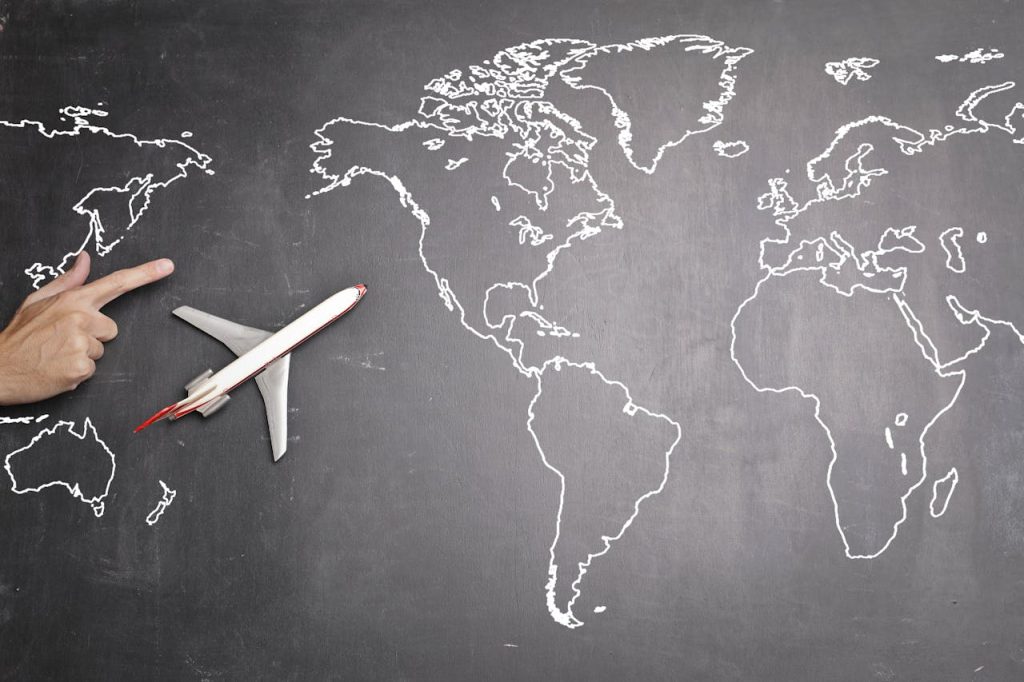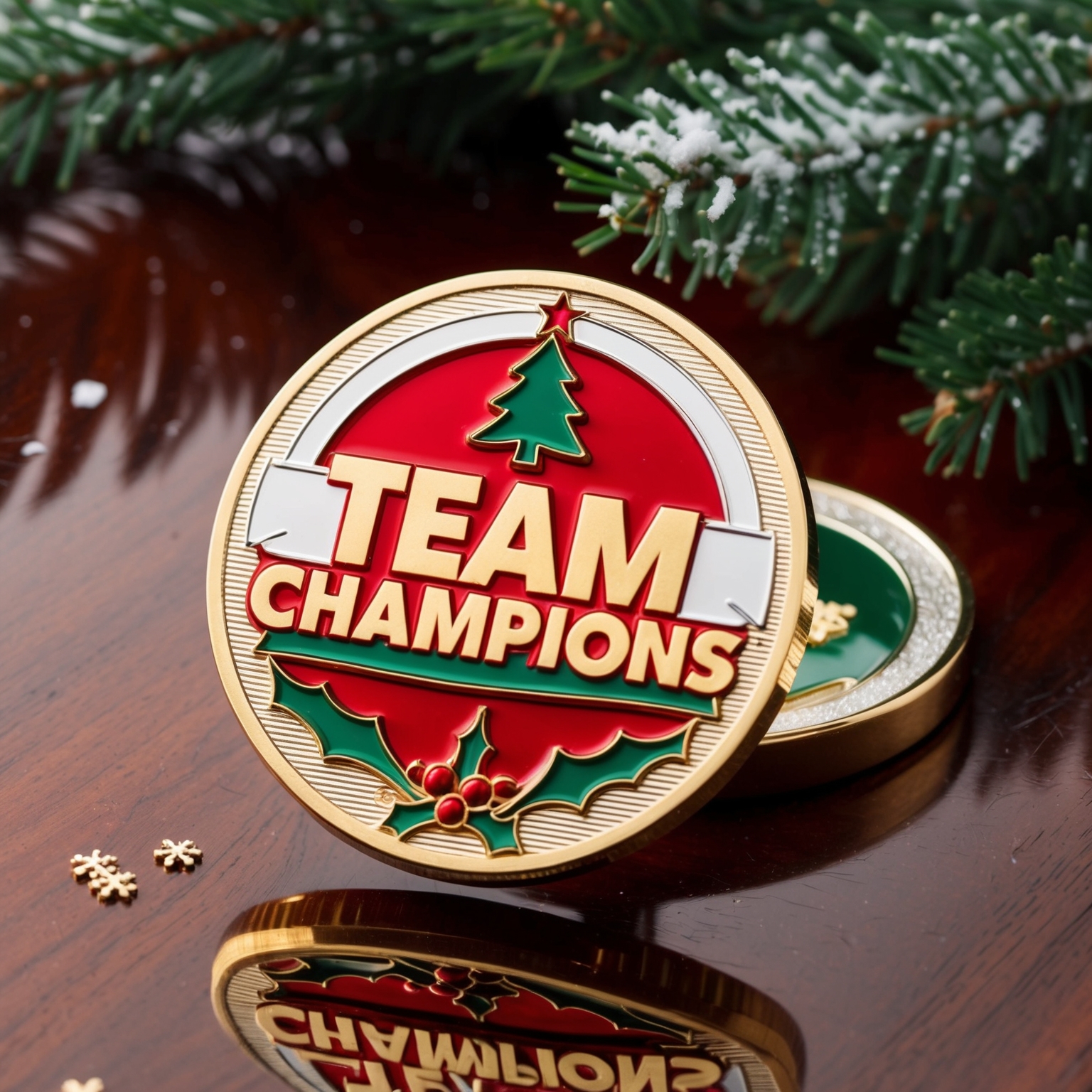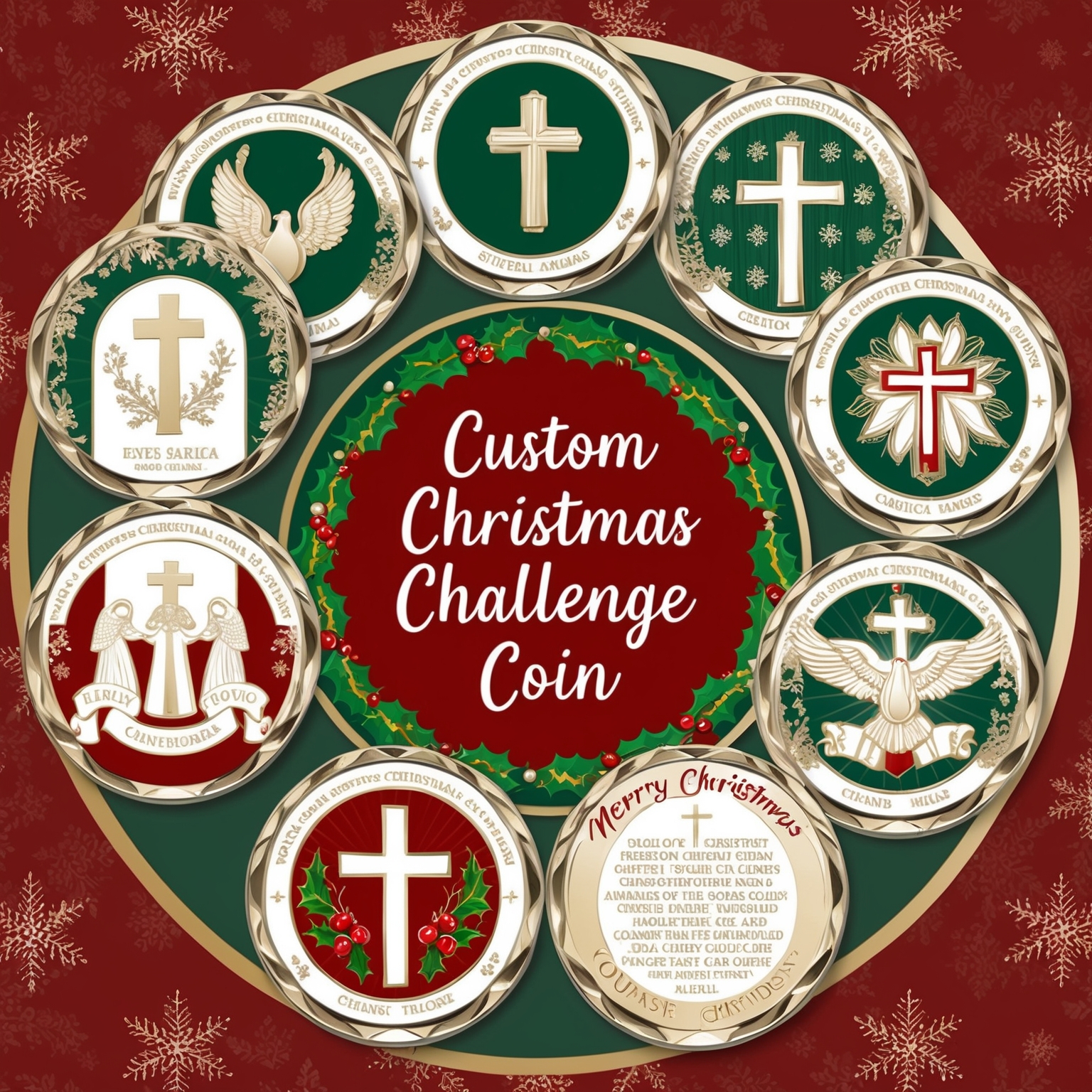In the complex and often delicate world of international relations, symbols and gestures play a significant role in building and maintaining relationships between nations. While formal treaties and agreements are the foundation of diplomatic interactions, the use of tokens and symbols, such as challenge coins, has become an increasingly important part of diplomacy. Challenge coins, with their rich history and symbolic value, have evolved from military traditions to become powerful tools in fostering goodwill, recognizing achievements, and strengthening ties between nations.
This comprehensive article explores the role of a challenge coin in international relations and diplomacy. We will delve into their history, the ways they are used in diplomatic settings, and the significance of their design and presentation. We will also discuss how a challenge coin can serve as symbols of trust, respect, and mutual understanding, helping to bridge cultural divides and facilitate diplomatic efforts around the world.
The History and Evolution of Challenge Coins
To understand the significance of a challenge coin in international diplomacy, it is essential first to explore their origins and evolution. Challenge coins have a long and storied history, beginning in the military and eventually finding their place in various sectors, including international relations.
1. Military Origins of Challenge Coins
The tradition of a challenge coin is believed to have started during World War I, when a wealthy American lieutenant had bronze medallions made for his unit as a symbol of their camaraderie and shared identity. These medallions, or a challenge coin, became a way for soldiers to prove their affiliation with a specific unit and were often used in informal challenges among comrades. The tradition continued through World War II and the Vietnam War, where a challenge coin became a symbol of belonging and loyalty within military units.
2. Expansion Beyond the Military
Over time, the use of a challenge coin expanded beyond the military to include law enforcement, fire services, and other public service organizations. These coins were used to recognize achievements, build morale, and foster unity among members. As the tradition of a challenge coin grew, their use spread to the corporate world, where they became a popular tool for employee recognition and brand promotion.
3. Introduction to Diplomacy
In recent decades, challenge coins have found their way into the realm of international diplomacy. Governments, diplomatic missions, and international organizations have adopted the use of a challenge coin as a way to recognize and honor visiting dignitaries, build goodwill, and strengthen relationships between nations. These coins have become an important part of the diplomatic toolkit, serving as tangible symbols of mutual respect and collaboration.
The Role of Challenge Coins in International Diplomacy
Challenge coins play a multifaceted role in international diplomacy. They serve as symbols of goodwill, recognition, and mutual respect, helping to facilitate dialogue and cooperation between nations. Below, we explore the various ways in which a challenge coin are used in diplomatic settings.
1. Building Goodwill and Fostering Relationships
One of the primary functions of challenge coins in diplomacy is to build goodwill and foster relationships between nations. By presenting a challenge coin to a visiting dignitary or foreign counterpart, a diplomat can express appreciation, respect, and a desire to strengthen ties. The exchange of a challenge coin can help set a positive tone for diplomatic discussions and create a foundation of trust and mutual understanding.
Practical Example:
During a state visit, the president of a country presents a custom challenge coin to a visiting foreign leader. The coin features the national emblem of the host country, along with the words “In Friendship and Cooperation.” The gesture of presenting the coin serves as a symbol of the strong relationship between the two nations and their commitment to working together on shared goals.
2. Recognizing Diplomatic Achievements
Challenge coins are also used to recognize significant achievements in the field of diplomacy. These achievements might include successful negotiations, the signing of important treaties, or the resolution of conflicts. By awarding a challenge coin to a diplomat or international representative, a government or organization can honor their contributions to peace and cooperation.
Practical Example:
A United Nations ambassador receives a challenge coin from the Secretary-General in recognition of their efforts to mediate a peace agreement between two conflicting nations. The coin features the UN emblem, the ambassador’s name, and the words “Peace and Diplomacy.” The coin serves as a tangible acknowledgment of the ambassador’s role in achieving a peaceful resolution.
3. Commemorating Diplomatic Milestones and Events
Challenge coins are often used to commemorate significant diplomatic milestones and events. Whether it’s the anniversary of an important treaty, the establishment of a new embassy, or a high-level summit, a challenge coin can serve as lasting reminders of these historic moments. By distributing these coins to participants, diplomats can create a sense of shared history and achievement.
Practical Example:
A challenge coin is created to commemorate the 50th anniversary of a landmark treaty between two countries. The coin features the flags of both nations, the date of the treaty’s signing, and the words “50 Years of Partnership.” The coins are distributed to government officials, diplomats, and key stakeholders during an anniversary celebration, honoring the long-standing relationship between the two nations.
4. Bridging Cultural Divides
Diplomacy often involves navigating cultural differences and finding common ground between nations. Challenge coins can play a role in bridging these cultural divides by incorporating symbols, imagery, and language that resonate with both parties. By designing a challenge coin that reflects the cultural values and heritage of both nations, diplomats can demonstrate respect and a willingness to understand and appreciate each other’s perspectives.
Practical Example:
During a diplomatic visit to Japan, a U.S. ambassador presents a challenge coin to a Japanese counterpart. The coin features the American and Japanese flags, as well as imagery of cherry blossoms, a symbol of renewal and friendship in Japanese culture. The design reflects the ambassador’s respect for Japanese traditions and the desire to strengthen ties between the two nations.
5. Strengthening Multilateral Relations
In addition to bilateral relationships, a challenge coin are also used to strengthen multilateral relations within international organizations such as the United Nations, NATO, and the European Union. These coins can symbolize the collective efforts of member states to achieve common goals, whether it’s promoting peace, security, or economic development.
Practical Example:
NATO creates a challenge coin to recognize the contributions of member states to a joint peacekeeping mission. The coin features the NATO emblem, the flags of participating countries, and the words “Unity and Strength.” The coins are distributed to military and civilian personnel from member states, reinforcing the importance of collaboration and shared responsibility in achieving mission objectives.
Designing Challenge Coins for Diplomatic Purposes
Designing challenge coins for diplomatic purposes requires careful consideration of the elements that will make the coin meaningful and impactful. The design should reflect the values and identity of the issuing nation or organization, as well as the specific diplomatic achievement or relationship being recognized. Below, we’ll explore the key elements to consider when designing a challenge coin for diplomatic use.
1. Incorporating National Symbols and Emblems
One of the most important aspects of designing a challenge coin for diplomatic purposes is incorporating national symbols and emblems. These elements are essential to the coin’s identity, representing the issuing nation’s values, heritage, and sovereignty.
Practical Example:
A challenge coin created by the U.S. Department of State features the Great Seal of the United States on one side and the State Department’s emblem on the other. The coin is used to recognize foreign diplomats and dignitaries who have contributed to strengthening U.S. foreign relations.
2. Reflecting Diplomatic Achievements and Milestones
The design of the challenge coin should clearly reflect the specific diplomatic achievement or milestone being recognized. Whether it’s the signing of a treaty, the establishment of a new diplomatic mission, or the resolution of a conflict, the coin’s design should capture the essence of the achievement and the significance of the moment.
Practical Example:
A challenge coin is created to commemorate the successful negotiation of a trade agreement between two countries. The coin features the national flags of both nations, the date of the agreement, and the words “Prosperity Through Partnership.” The design highlights the importance of economic cooperation and the shared benefits of the agreement.
3. Personalization for a Lasting Impact
Personalization is a key element of creating a meaningful challenge coin for diplomatic use. By adding personal details, such as the recipient’s name, specific achievement, or a meaningful date, the coin becomes a unique keepsake that will be cherished for years to come.
Practical Example:
A European Union ambassador receives a personalized challenge coin in recognition of their contributions to the EU’s environmental initiatives. The coin features the EU emblem, the ambassador’s name, and the words “Champion of Sustainability.” The personalized engraving makes the coin a special memento that honors the ambassador’s dedication to environmental diplomacy.
4. Choosing the Right Symbols and Imagery
Symbols and imagery play a crucial role in the design of a challenge coin for diplomatic purposes. These elements should be chosen carefully to reflect the values of the issuing nation or organization, the specific diplomatic achievement being recognized, and the overall message of the coin.
Practical Example:
A challenge coin is designed to recognize the efforts of a diplomat who played a key role in a cultural exchange program between two countries. The coin features an image of a handshake, symbolizing cooperation and friendship, along with the words “Cultural Ambassador.” The imagery reflects the diplomat’s role in fostering mutual understanding and cultural exchange.
5. Selecting the Appropriate Materials and Finishes
The choice of materials and finishes can significantly impact the appearance and feel of the challenge coin. Different materials offer varying levels of durability, weight, and aesthetic appeal, while finishes can add texture, color, and a polished look to the coin.
Practical Example:
A high-level summit between two countries is commemorated with a challenge coin made from antique gold. The gold material gives the coin a sense of prestige and importance, reflecting the significance of the summit and the high-level discussions that took place.
6. Incorporating Texture and Detailing
Texture and detailing can add depth and dimension to the challenge coin, making it more visually interesting and tactile. Raised or recessed elements, 3D designs, and intricate engravings can all contribute to a more impactful and memorable coin.
Practical Example:
A challenge coin is created to honor a diplomat who has served for over 30 years in international relations. The coin features a raised image of a globe, symbolizing the diplomat’s global impact, with their name and years of service engraved below. The raised and recessed elements add dimension to the design, making the coin more visually striking.
7. Balancing Aesthetics and Functionality
While it’s important to create a visually appealing design, it’s equally important to ensure that the challenge coin is functional and practical for its intended use. This includes considering the size, shape, and weight of the coin, as well as how it will be presented or displayed by the recipient.
Practical Example:
A small, lightweight challenge coin is designed for use in diplomatic exchanges during international summits. The coin is small enough to be easily carried and discreetly presented during meetings, yet its design is detailed and symbolic, making it a meaningful token of diplomacy.
The Impact of Challenge Coins on International Relations
When designed thoughtfully, challenge coins can have a profound impact on international relations. These coins serve as powerful symbols of diplomacy, helping to build trust, foster cooperation, and strengthen relationships between nations.
1. Building Trust and Mutual Respect
Challenge coins play a key role in building trust and mutual respect between nations. By presenting a challenge coin to a foreign counterpart, a diplomat can express a genuine commitment to the relationship and a willingness to work together in a spirit of cooperation.
Practical Example:
During a high-stakes negotiation between two countries, a senior diplomat presents a challenge coin to their counterpart as a gesture of goodwill. The coin features the national emblems of both countries, along with the words “Trust and Partnership.” The gesture helps to build trust between the negotiating parties and sets a positive tone for the discussions.
2. Strengthening Bilateral and Multilateral Relationships
Challenge coins are an effective tool for strengthening both bilateral and multilateral relationships. Whether they are exchanged between two nations or distributed to members of an international coalition, a challenge coin symbolize the shared goals and collective efforts of the parties involved.
Practical Example:
A challenge coin is created to honor the members of a multinational task force working to combat global terrorism. The coin features the emblems of the participating nations, along with the words “United Against Terror.” The coins are distributed to military and civilian personnel from each country, reinforcing the importance of collaboration and joint action.
3. Promoting Peace and Diplomacy
Challenge coins can serve as symbols of peace and diplomacy, particularly in situations where conflict or tension has been resolved through diplomatic efforts. By recognizing the contributions of those who work to promote peace, a challenge coin helps to reinforce the values of diplomacy and cooperation.
Practical Example:
A challenge coin is awarded to diplomats from two countries who successfully mediated a ceasefire in a long-standing conflict. The coin features a dove, a universal symbol of peace, along with the words “Peace Through Diplomacy.” The coins are presented during a signing ceremony, celebrating the successful resolution of the conflict and the diplomats’ role in achieving it.
4. Creating a Legacy of Diplomatic Achievement
Challenge coins serve as lasting mementos of diplomatic achievements, creating a legacy that can be passed down to future generations. These coins not only commemorate specific events or milestones but also serve as a reminder of the importance of diplomacy in building a more peaceful and cooperative world.
Practical Example:
A challenge coin is created to commemorate the founding of an international organization dedicated to environmental protection. The coin features the organization’s emblem, the date of its founding, and the words “Protecting Our Planet.” The coins are distributed to founding members and key stakeholders, creating a lasting legacy of the organization’s mission and achievements.
5. Enhancing Diplomatic Protocol and Etiquette
Challenge coins can also enhance diplomatic protocol and etiquette, providing a formal yet personal way to recognize and honor foreign counterparts. By presenting a challenge coin as part of a diplomatic exchange, diplomats can convey respect, gratitude, and appreciation in a culturally sensitive manner.
Practical Example:
During a diplomatic reception, the host country’s foreign minister presents a challenge coin to each visiting ambassador. The coin features the national emblem of the host country, along with the words “Welcome and Friendship.” The presentation of the coin is a gesture of hospitality and respect, in keeping with diplomatic protocol.
The Role of Challenge Coins in Facilitating International Relations and Diplomacy
Challenge coins have evolved from their military origins to become powerful tools in the realm of international diplomacy. These small yet significant tokens serve as symbols of trust, respect, and mutual understanding, helping to build and strengthen relationships between nations. Whether used to recognize diplomatic achievements, commemorate significant milestones, or foster goodwill and cooperation, a challenge coin plays a vital role in facilitating international relations.
Designing a challenge coin for diplomatic purposes requires a deep understanding of the values, identity, and goals of the issuing nation or organization. By carefully considering the design elements, materials, and presentation of the coin, diplomats can create tokens that are both meaningful and impactful. These coins not only serve as lasting mementos of diplomatic achievements but also as tangible reminders of the importance of diplomacy in building a more peaceful and cooperative world.
As the practice of using a challenge coin in diplomacy continues to grow, these tokens will remain a cherished tradition, embodying the values of diplomacy, respect, and cooperation that are essential to international relations. By recognizing the significance of challenge coins and their role in facilitating diplomacy, we can ensure that they continue to contribute to the strengthening of global ties and the promotion of peace for generations to come.
If you are interested in designing your very own high-quality custom challenge coins feel free to call us at 855-471-6752 or fill out one of our FREE QUOTE FORMS.



